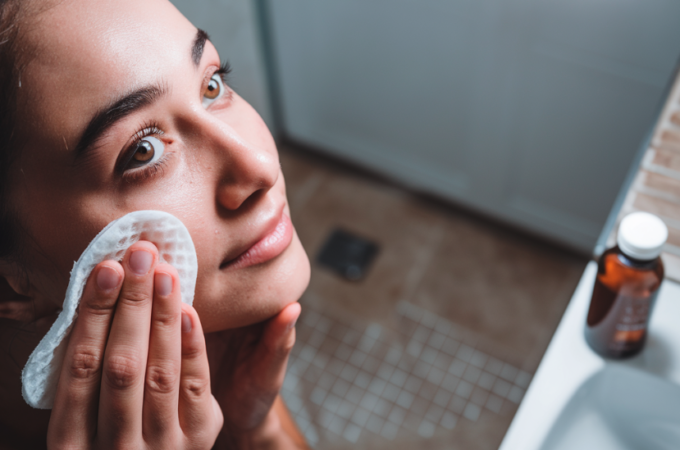
Myths and Facts About Lip Fillers
As with other cosmetic procedures, the stigma surrounding lip fillers is largely due to sensationalist media reporting. The “botched” procedures that make headlines don’t reflect the usual result. Many of the “botched” procedures are performed in settings that don’t have the same levels of regulation and required education as the United States.
Thousands of lip injections are performed in the United States every year. Lip injections are the fastest growing trend in terms of popular facial procedures. If you’ve been thinking about getting a lip filler procedure, it’s important to know the facts from the fiction. When you have an actual view of the potential risks versus the benefits, you can make an informed decision. When administered by a knowledgeable individual, the risks of lip fillers can be minimized while maximizing the benefits. That’s why it’s important to seek experienced professionals like Dr. Agarwal when choosing a lip augmentation specialist.
Myth: Filler procedures stretch and deflate the lips.
This myth doesn’t have any scientific backing. It doesn’t even have backing in sensationalist media reporting! There isn’t any evidence indicating that lip fillers will stretch or deflate the lips. There’s quite a bit of evidence to the contrary.

The line of thinking is easy enough to follow. Since lip fillers make the lips plumper, that must mean that they stretch the skin, right? But that’s not quite accurate. It isn’t like using gauges to stretch the earlobes. The truth is a little more complicated – and, thankfully, doesn’t involve any deflation!
Lip injections are done using an ingredient called hyaluronic acid. This compound is also naturally produced by your body, working to lubricate the muscles and joints so you can move without discomfort and pain. The injection of this ingredient leads to collagen synthesis in the area that was injected.
Collagen is the material responsible for keeping your skin elastic and smooth. Since the lip injection increases collagen production, the dermis layer of the lip is thickened. There’s the prevention of wrinkling even once the acid itself is no longer actively working. Once the initial effects of the lip filler wear off, there’s no sagging or wrinkling to worry about. Your lips may be smoother than they were before the procedure!
Myth: It needs constant refilling, isn’t reversible or doesn’t last long enough.
Nowadays, there are a ton of options available for lip fillers. Depending on the results you’re hoping to achieve, you can talk to your doctor about the one that’s right for you. Modern-day hyaluronic acid fillers are capable of lasting for up to eighteen months at a time. The exact length of time depends on how your body synthesizes the acid, but you should have at least six months.
But what about reversible options?
As it turns out, hyaluronic acid is your best friend there, too. If you don’t like the outcome of the procedure, and you don’t want to wait for the acid to naturally synthesize in the body, a counter injection can be done. Your doctor will inject hyaluronidase, which is a compound that significantly accelerates the process of absorption. Your lips will be back to their original state much more quickly than the six-month minimum.
Myth: Lip injections cause cold sores and scarring.
If you don’t have a history of cold sores, a lip injection will not cause you to begin developing them. There also aren’t any reported cases of scarring due to the injections. Unlike an invasive surgical procedure, there’s no breaking of the skin beyond a minor pinprick.

Cold sores are the result of a virus that lives inside the body. The lip injection is administered using a single-use needle that is stored in a sterile and pre-sealed package. This needle won’t confer any new viruses or other infections to your body.
If you do have a history of cold sores, a cold sore might form on the injection site because of how the body reacts to the needle. You should talk to your doctor and mention whether you have a history of cold sores. Rather than disqualifying you as a candidate, your doctor can prescribe an antiviral medication before the procedure to help reduce your chances of developing a cold sore.
Myth: Injections look unnatural and reduce your ability to make facial expressions.
This is one of the most common myths surrounding lip fillers and other facial fillers. The media loves to sensationalize any cosmetic procedure that didn’t go as planned. But a lip injection done correctly will hardly be noticeable to an onlooker. Rather than creating a giant jump in size, lip fillers offer a more subtle increase in lip fullness.
In the same vein, a lip injection done correctly will not have any effect on your ability to emote and make facial expressions. This myth circulates because of the prevalence of “bad Botox” myths. It’s assumed that Botox and fillers both tighten your skin and reduce your ability to react to things. This isn’t true of Botox or fillers.
The feel of fillers is another common concern. But your mouth won’t feel unnatural after a lip injection. Since hyaluronic acid is already produced by the body, your lips will feel exactly like they always do, except just a little fuller. They’ll be as mobile, elastic, and soft as they were before.
Myth: All fillers can work on any part of the body, and you don’t need medical experience to inject them.

This kind of belief is what leads to the “botched” procedures that people are so fond of sharing. Different fillers work differently in different areas of the body. When you’re getting a lip injection done, it should be by a licensed professional with an FDA-approved procedure. The FDA has approved the use of hyaluronic acid as a lip filler.
You should never have a cosmetic procedure performed by anyone who hasn’t been specifically trained and licensed to do so. Even when picking from licensed professionals, you want one with experience.




